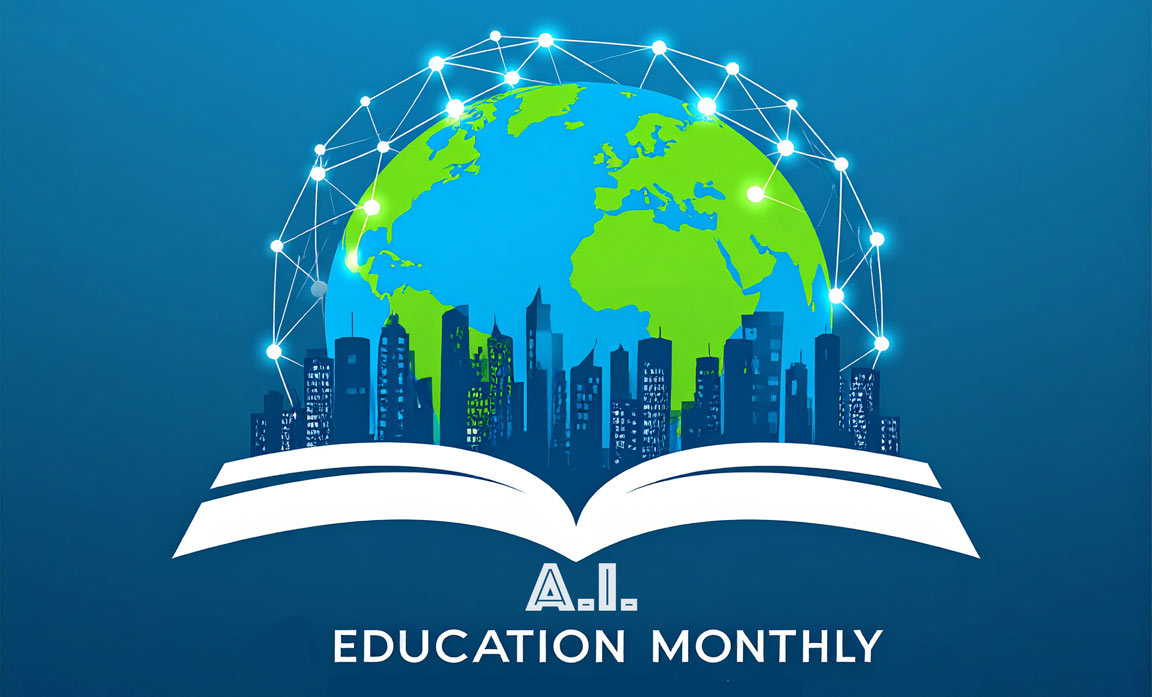In this article, we scan the Internet for last month’s stories related to artificial intelligence in education and report our findings in summary or newsletter format.

OpenAI’s (ChatGPT’s) New Study Mode
OpenAI’s new study mode for ChatGPT throws questions back at students, but the learning feature doesn’t address generative AI’s underlying disruption of education, an article in Wired says. It’s trying to prevent — or at least “encourage against” — students from using the technology to take homework shortcuts.
Using Study Mode for Actual Learning, Not Cheating
An article in Vox asks college professors, What’s the point of college if no one’s actually doing the work? It’s not a rhetorical question. Increasingly, students aren’t completing their work. They’re offloading their essays, their homework, and even their exams to AI tools like ChatGPT or Claude.
Will It Work in the Long Run?
As a result, AI has been blamed for a tsunami of cheating that’s taken hold in the US educational system in recent years, according to a report in Gizmodo. An interview with a college professor explained how bad it’s gotten lately as technology advances at a breakneck pace. However, OpenAI wants educators and students to know that, in fact, it’s here to help.
And It Means Big Business
Education has become a battleground in the competition between OpenAI and Google, reports Business Insider, and OpenAI’s study mode is just the latest volley.
Microsoft Pumps Billions Into AI to Encourage Use
A report in The Register says that after committing more than $13 billion in strategic investments to OpenAI, Microsoft is splashing out $4 billion more to get people using the technology. The bulk of the money will go toward AI and cloud credits for K-12 schools and community colleges.
“Working in close coordination with other groups across Microsoft, including LinkedIn and GitHub, Microsoft Elevate will deliver AI education and skilling at scale,” said Brad Smith, president and vice chair of Microsoft Corporation, in a blog post. “And it will work as an advocate for public policies around the world to advance AI education and training for others.”
“AI holds tremendous promise but huge challenges — and it’s our job as educators to make sure AI serves our students and society, not the other way around,” said American Federation of Teachers President Randi Weingarten in a canned statement.
The AFT is the second-largest teachers union in the country. A story in Wired confirms the union’s collaboration with Microsoft and OpenAI.
Some Educators Warn of AI’s Dangers
In an open letter from educators who refuse the call to adopt GenAI in education, educators write, “Current GenAI technologies represent unacceptable legal, ethical and environmental harms, including exploitative labour, piracy of countless creators’ and artists’ work, harmful biases, mass production of misinformation, and reversal of the global emissions reduction trajectory.
“GenAI is a threat to student learning and wellbeing,” they continue. “There is insufficient evidence for student use of GenAI to support genuine learning gains, though there is a massive marketing push to position these products as essential to students’ future livelihoods.”
Some Nonprofits Create Homegrown AI Tools
AI models aren’t made equal. Some nonprofits are creating their own tools instead, harnessing the power of AI to address global inequities, Business Insider reports. As millions of young people worldwide increasingly rely on AI chatbots to acquire knowledge as part of their learning — and even complete assignments for them — one organization is concerned that those in developing countries without access to the tech could be put at an unfair disadvantage.
And it’s teaming up with MIT, Harvard, and the UN Development Programme to use the very technology it believes is causing this problem to fix it.















